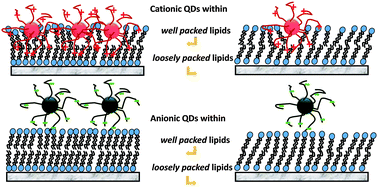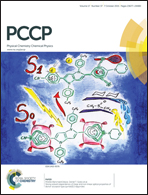Interplay of electrostatics and lipid packing determines the binding of charged polymer coated nanoparticles to model membranes†
Abstract
Understanding of nanoparticle–membrane interactions is useful for various applications of nanoparticles like drug delivery and imaging. Here we report on the studies of interaction between hydrophilic charged polymer coated semiconductor quantum dot nanoparticles with model lipid membranes. Atomic force microscopy and X-ray reflectivity measurements suggest that cationic nanoparticles bind and penetrate bilayers of zwitterionic lipids. Penetration and binding depend on the extent of lipid packing and result in the disruption of the lipid bilayer accompanied by enhanced lipid diffusion. On the other hand, anionic nanoparticles show minimal membrane binding although, curiously, their interaction leads to reduction in lipid diffusivity. It is suggested that the enhanced binding of cationic QDs at higher lipid packing can be understood in terms of the effective surface potential of the bilayers which is tunable through membrane lipid packing. Our results bring forth the subtle interplay of membrane lipid packing and electrostatics which determine nanoparticle binding and penetration of model membranes with further implications for real cell membranes.


 Please wait while we load your content...
Please wait while we load your content...